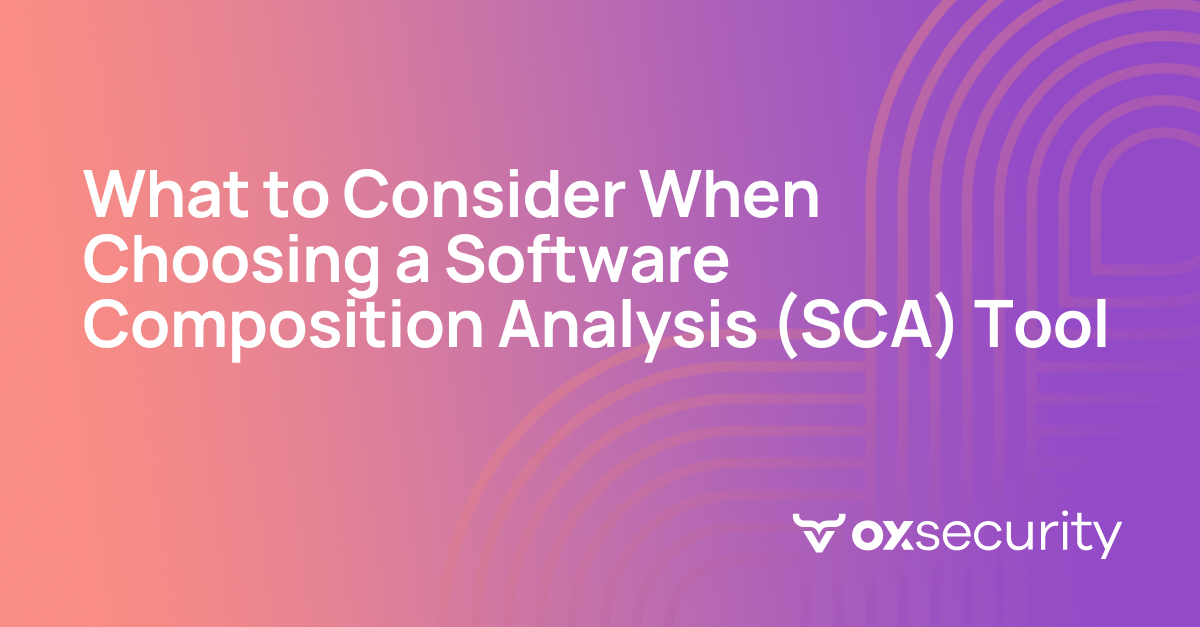In an era where digital transformation is ubiquitous and cloud-native applications drive more and more enterprise workloads, organizations must navigate a landscape fraught with threats targeting these applications, specifically targeting the data they process and contain. The growing complexity of applications and the expanding attack surface necessitates that development and security teams adopt a comprehensive approach to application security that ensures the integrity of every build from the first line code to the application’s release.
And this isn’t just for the sake of aligning with good security practices; as regulatory bodies and industry standards organizations increase the minimum security requirements for data protection, DevOps and DevSecOps teams must increasingly bake compliance into development processes to ensure applications don’t contain vulnerabilities that would subject the organization to non-compliance sanctions or leave data vulnerable to unauthorized access.
The challenge of “compliance as code” lies in meeting these standards without adding time and cost overruns to the development process. Traditional testing techniques for application security are resource-intensive, and many organizations can’t adequately integrate them because of a lack of time, staff, and money. Application Security Posture Management (ASPM) has emerged as a strategic framework to automate application security processes but also ensure adherence to and documentation of compliance with relevant mandates.
ASPM platforms can contribute to compliance efforts in multiple ways:
- Risk Assessment: ASPM begins with a comprehensive risk assessment, identifying potential threats and vulnerabilities. This aligns seamlessly with compliance requirements that necessitate organizations to understand and manage risks to the confidentiality, integrity, and availability of sensitive data.
- Vulnerability Management: Compliance frameworks frequently require organizations to manage and mitigate software vulnerabilities actively. The Software Bill of Materials (SBOM), a core element of many ASPM platforms, provides a detailed inventory of components and their versions and thereby aids in identifying known vulnerabilities associated with those components. This facilitates efficient vulnerability management and helps organizations comply with timely patching and remediation requirements.
- Continuous Monitoring: Compliance often requires continuous monitoring of security controls. ASPM integrates real-time monitoring capabilities, allowing organizations to promptly detect and respond to security incidents, meeting regulatory frameworks’ demands.
- Secure Development Practices: Integrating secure coding practices into the software development lifecycle is a cornerstone of ASPM. This enhances the security of applications and aligns with compliance mandates related to secure software development.
- Incident Response Planning: Compliance frameworks stress the importance of having effective incident response plans. ASPM includes developing and testing incident response plans, ensuring that organizations are well-prepared to handle and recover from security incidents.
- Documentation and Reporting: Compliance almost always requires organizations to maintain detailed records of their security measures. ASPM facilitates the documentation of security processes during application development, providing organizations with a comprehensive trail of their application security efforts for compliance audits and reporting.
Advancing Beyond Traditional ASPM: Achieving End-to-End Visibility and Enhanced Risk Prioritization with OX
While ASPM platforms help organizations embrace models like compliance as code with less internal friction, many standard ASPM solutions still rely on collections of third-party tools and do not provide complete visibility across the software development lifecycle. Many traditional ASPMs also need to go farther in contextualizing vulnerabilities so developers accurately prioritize the most serious risks.
The OX Active ASPM platform goes beyond traditional ASPMs, providing end-to-end visibility and traceability from code to cloud and cloud to code, and helps development and security teams maintain an accurate and actionable view of compliance throughout the development process.
Streamlining Compliance: Empowering Teams with Real-Time Monitoring and Regulatory Alignment
The platform empowers security and compliance teams to effectively evaluate and align organizational security strategies with regulatory standards. Supporting over 35 compliance frameworks, including NIST, SOC2, and GDPR, OX enables early detection of compliance issues and provides continuous, real-time monitoring. This capability allows teams to actively manage compliance, ensuring development, security, and compliance practices are consistently optimized within the development environment.
OX Leads the Way in SBOM Evolution with the Introduction of PBOM for Easy Navigation of Regulations
OX positions organizations to proactively address evolving Software Bill of Materials (SBOM) regulations. Utilizing proprietary technologies and advanced risk models, such as the Pipeline Bill of Materials (PBOM)—a sophisticated extension of the traditional SBOM—the platform offers a comprehensive view of the software development lifecycle. Beyond listing software components, the PBOM incorporates the processes and procedures influencing the final product. This approach, developed from analyzing over 70 cyberattacks in the past year, addresses the insufficiencies of SBOMs alone, as evidenced by breaches like SolarWinds and Log4j. These events underscored the inadequacy of merely listing components for ensuring security. Integrating PBOM, OX delivers an exhaustive solution that elevates compliance beyond a mere formality, ensuring proactive AppSec measures are in place.
To learn more about improving compliance in your development processes without adding a burden on your DevOps and DevSecOps teams:



